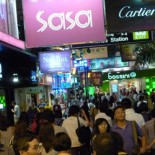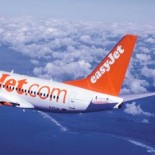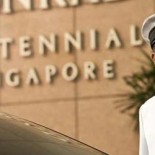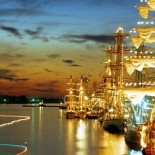Journals
Upcoming Releases
The publication of Volume 1 for 2022 is planned for March. Students, Professionals and Academics worldwide are all welcome to publish their hospitality and tourism research here. Read our Editorial Policy to apply.
2013 Volume 3 Journal
-
An Analysis of Performance Appraisal on Employee’s Motivation in the Food and Beverage Department in Intercontinental Hong Kong
Posted on October 9, 2013 | No CommentsIntercontinental Hong Kong (ICHK)’s objective is to deliver “Great Hotels Guests Love” (IHG, 2012a) and it believes that ingenious and ardent employees are essential to develop quality guest services. Different forms of performance appraisal are being conduct regularly to ensure and maintain the service standard. In order to maintain high standard services, “Intercontinental Hong Kong has a staff of approximately 800 provided an extremely high ratio of staff to guests … provides 24-hour non-stop service for all guest’s requests” (Intercontinental Hong Kong, 2012). -
Assess The Effectiveness of Knowledge Sharing Strategies In Organizations Using Kolb’s Learning Styles: A case study of Ritz Carlton Hotel in Beijing, China
Posted on October 9, 2013 | No CommentsDixon stated in 1999, “We have entered the knowledge age, and the new currency is learning.” Intellectual capital and the management of knowledge are playing increasingly important roles in today’s organizational world (Chase, 1997 cited in Jarrar and Zairi, 2010). Being strongly agreed with this statement, Alberto et al. (2012) claimed that the only sustainable competitive advantage of organizations, in the future, would be the creation and management of implied knowledge. -
Pricing Strategy, Creating a Competitive Advantage: The case study of EasyJet.
Posted on October 9, 2013 | No CommentsThe author is concerned that pricing strategies are very important in making a business successful. A pricing strategy is a complement of a pricing concept to a certain situation in specific period of time (Baker, 2000). He believes that marketers have to take into account the fact that price should not be over and under estimated -
Consumer Variance in Minimum Acceptable Standards in Different Types of Restaurants
Posted on October 9, 2013 | No CommentsAccording to Khan (2007), the items that we, as consumers, purchase are dependant on a number of internal and external factors. Internal factors could be a person’s personal values or personality; it could be what attracts the person to the product or service. Callahan (2013) elaborated that internal factors could also be further influenced by either internal or external causes. External factors on the other hand, could be a person’s social status or peer group (Ibid, 2013). -
The Battle of Intrinsic and Extrinsic Reward Systems, the Next Step for the Hospitality Industry: The Case of Conrad Centennial Singapore.
Posted on October 9, 2013 | No CommentsIt reflects positively on Singapore tourism that there will be more than 42 hotels to provide more than 15,000 rooms by 2015 in Singapore (CBRE hotels, 2009). It shows that the hotel industry in Singapore is growing fast and would need more labour to support this industry. However, the employee turnover rate of the hospitality industry within Singapore is 45% (Noe et al., 2008), which is very high. -
The Development of Greek Tourism During Debt Crisis Period
Posted on October 9, 2013 | No CommentsGokay (2009) reported that 2008 was the start of the worst economic crisis ever after the Great Depression between 1929 and 1930. United Nations (2012) stated that after the fourth year, the world suffered from the global financial crisis and still found a way to recover, but unfortunately 2012 saw the deeper move in the crisis of the world economy. However, according to World Tourism Organization (UNWTO) (2012) the number of tourists reached one billion and tourism was still considered to be one of the most developed industries in economic sector worldwide. -
The Implications of Brand Positioning Strategy towards the Growth of the Tourism Industry in Latvia
Posted on October 9, 2013 | No CommentsLatvia is a country located in The Baltic Sea Region, northern part of Europe. It is famous for pristine nature, arts and architectures (Latvian Tourism Development Agency, 2012). Despite the fact that Latvia is still considered as a less-favoured destination compared to other Baltic countries, it has shown a continual growth in the number of inbound tourists since the economic slump hit in 2008 and 2009 (OECD, 2012). -
The Motivation and Expectation of European Tourists in Rio de Janeiro Carnival
Posted on October 9, 2013 | No CommentsUrry and Larsen (2011) stated that another type of travel occurs where a ‘live’ event set to happen at particular moment. Rio de Janeiro is one of updated forms of tourism in South America for the recent decades owing to its annual mega carnival (Swarbrooke and Horner, 2007). The Rio carnival began in 1723 and along its development; it became a part of cultural tourism in Brazil in this modern era. -
The Role of Destination as a Brand and Image as a Motivator for Destination Vacation Choice
Posted on October 8, 2013 | No CommentsSince 1979 Walt Disney World Resort has been attracting visitors from all generations, building a vision of becoming one of the biggest holiday destinations with an offer of various amusements, unique resorts properties and relaxation opportunities. Nowadays this entertainment complex has the world recognition as a distinguished brand, with characterized products and services, what is, moreover, building its strong image and as a consequence additional value of competitive advantage. -
Workplace Bullying in Hospitality Industry
Posted on October 8, 2013 | No CommentsThese days one of the serious concerns that society faces is workplace bullying, though it has not been long ago that it was first addressed as one (Porteous, 2002). It exists in both, big and small companies (Khan and Khan, 2012). According to Porteous (2002), some surveys showed that approximately 53% of employees in the United Kingdom had been bullied at the place of employment.











